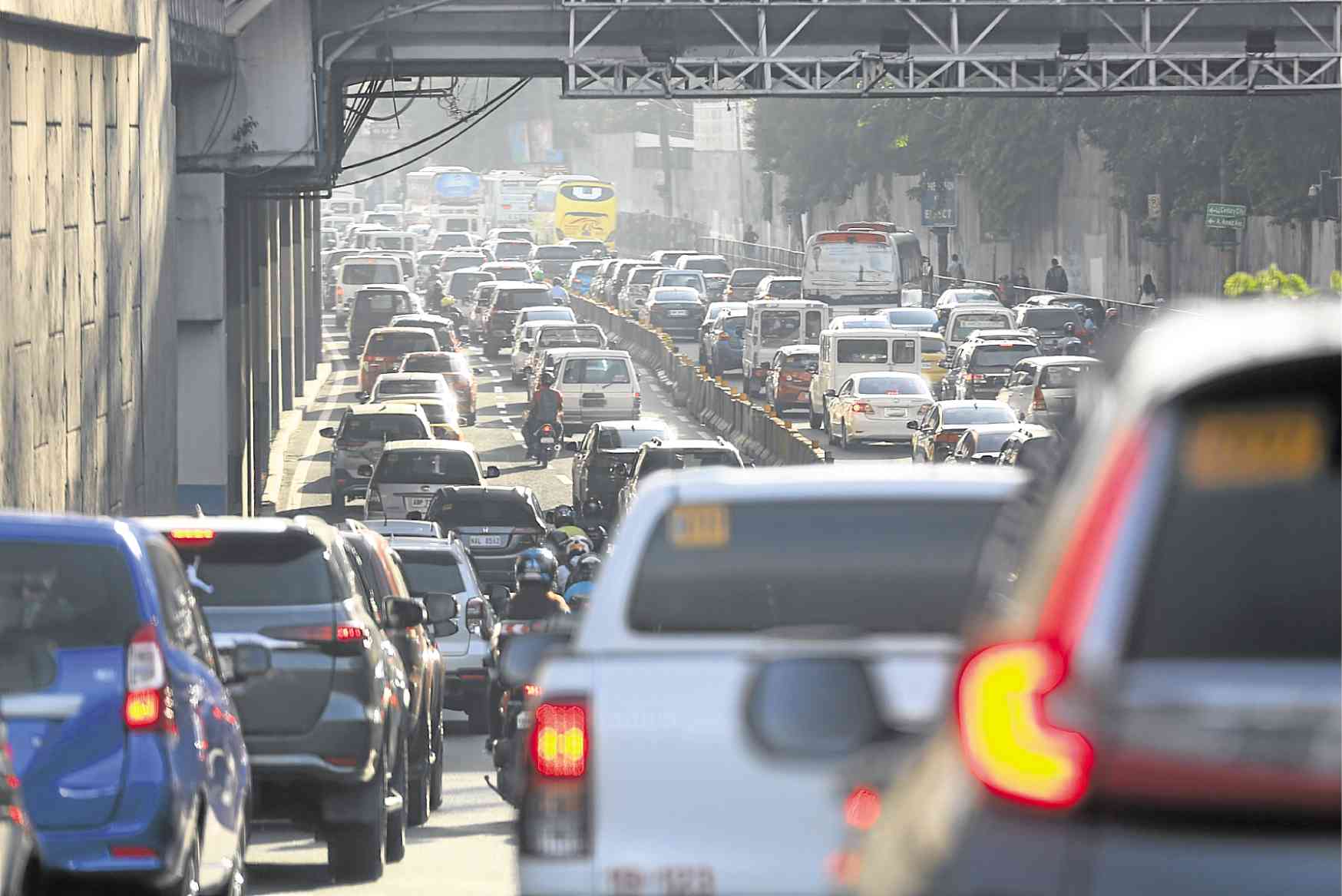
CURE-ALL? A proposal from an engineering consulting firm based on years of research seeks to provide a solution to the perennial traffic problem on Edsa. —NIÑO JESUS ORBETA
MANILA, Philippines — A 2016 proposal submitted to the Office of the President seeks to turn Edsa, Metro Manila’s main artery, into a one-way southbound road.
The proposal of GPI Engineers Inc., an engineering consulting company that also conducts environmental and engineering studies, is based on several years of research on how best to unlock the existing road networks to decongest the metropolis.
Fernando Guevara, GPI president, said in a forum on Wednesday that the plan was hinged on prioritizing passenger buses and rationalizing their routes to make them more efficient.
Simple idea
The firm’s idea seems simple enough. Edsa will be turned into a one-way southbound highway, while opening C5 (C.P. Garcia, Katipunan, Tandang Sora) into a one-way, northbound thoroughfare.
This means that a person coming from Balintawak in Quezon City can use Edsa to reach Makati, but will have to go through C5 and traverse the radial roads to get back north.
In short, the proposal aims to displace vehicles from Edsa by making these pass through the metropolis’ radial roads.
Guevara estimated that this could raise the average car speed on Edsa and C5 to around 40 kilometers per hour, or twice their current average speed.
Rationalized bus routes
But for the proposal to work, transport regulators should first rationalize bus routes across the National Capital Region.
Guevara recommended the establishment of at least 96 bus stops on the 25-km Edsa alone, following the international standard of one bus stop every 200 meters.
To ferry the nearly 350,000 people using Edsa on average, there must be at least 2,200 buses traversing both Edsa and C5, with 54 buses per hour at every bus stop, he added.
On top of these, there should be additional bus routes outside Edsa to ease congestion on the busy thoroughfare. In the proposal’s executive summary, Guevara laid out 13 underserved routes where bus stops could be established.
These included Edsa corner R-1 via Airport Road to C5, Edsa to Balintawak via Taft Avenue, Divisoria to Masinag via Aurora Boulevard and Edsa to Roxas Boulevard via Buendia.
The proposal was submitted to the Office of the President as early as 2016, but the Department of Transportation “currently has a different priority: Mass transit.”
“They want the subway, the Skyway. And that’s fine with me. But eventually, they will realize that even if you put up a Skyway, or build a subway, you will still have to deal with the traffic below,” he said.
Metropolitan Manila Development Authority (MMDA) spokesperson Celine Pialago said that Guevara’s recommendation was one of the most sweeping, if extreme proposals to help alleviate the worsening traffic in Metro Manila.
While the MMDA has yet to study the proposal, Pialago said that if given a chance, its implementation must be wholly supported by the government, not just their agency.
Worth a try
Sought for comment, Primitivo Cal, executive director of the University of the Philippines Planning and Development Research Foundation, said the proposal was worth testing, at the very least.
Other cities, like New York, have long been practicing this complimentary one-way system, Guevara said. These are, of course, complemented by a robust public transport system.
But unlike Manila, New York has a grid-type road network where the roads are parallel to each other, Cal said.
“The roads are not like Edsa and C5, which are quite far from each other. They will not serve a similar travel pattern,” he explained.
Cal instead suggested using a mathematical model where buses are allowed to counterflow on Edsa and C5, while keeping private vehicles on a one-way traffic flow like in Bangkok, Thailand.